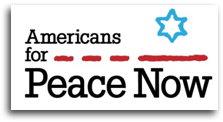The Middle East in the FY21 Consolidated Appropriations Bill
Produced by the Foundation for Middle East Peace in cooperation with Americans for Peace Now,
where the Legislative Round-Up was conceived. Views and positions expressed here are those of the writer,
and do not necessarily represent APN's views and policy positions.
***********************
This week Congress moved to avert a government shut-down (barely) by passing the 2021 Consolidated Appropriations
Act, which includes 11 FY21 must-pass appropriations bills (funding core government functions/agencies), the
Intelligence Authorization Act of 2021, and the Coronavirus Response and Relief bill. In addition, the Consolidated
bill includes fully 16 other (non-must-pass) bills — dealing with a seemingly ad hoc collection of legislative
priorities including bio/agriculture, pipelines, the environment, intellectual property, homeland security,
museums, aircraft, energy, water, health, and taxes. On 12/21, the House passed this massive bill in two roll call
votes (coming in at 327–85 and 359-53), and the Senate then passed the bill by a recorded vote
of 92-6. The bill now goes to President Trump.
All told the bill weighs in at 5593 pages, plus there are hundreds of pages of joint explanatory statements laying
out Congressional intent with respect to each bill included in the Consolidated bill. All of which was released the
same day Congress had to vote on it. Which means that the chances that any member of Congress actually read even a
small portion of the text or explanatory language before being forced to vote on the entire package are virtually
nil.
The full text of the FY21 Consolidated Appropriations Act is here (the text of the bill was inserted into an existing
bill, HR 133, which was hollowed out for this purpose; confusingly, as of this writing,
that bill still shows up in the Congressional Record under its original title and with its original content).
Middle East-related provisions – which are present in Division C (Department of Defense Appropriations Act, 2021),
Division K (Department of State, Foreign Operations, and Related Programs Act, 2021) and Division W (Intelligence
Authorization Act, 2021) are detailed below. This analysis covers both bill language and language from the relevant
Joint Explanatory Statement. Text of the Joint Explanatory Statement for SFOPS Approps
is here; text of the Joint Explanatory Statement covering DOD Approps
is here (and there is no statement for Intell Authorization).
****************************************************

 23 November, 2020
23 November, 2020